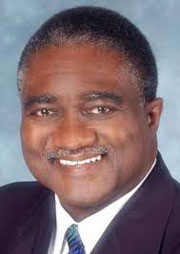

A Southern Governor breaks with the past
By George E. Curry
There are some painful things from my childhood in segregated Tuscaloosa, Ala., that I will never forget. At the top of the list is Gov. George C. Wallace’s June 11, 1963 “Stand in the School House Door” at the University of Alabama. I had just completed my sophomore year at Druid High School when Wallace came to my hometown to prevent two African Americans – Vivian Malone and James Hood – from registering for classes at Foster Auditorium.
In his inaugural address as governor, Wallace had promised, “segregation now, segregation tomorrow and segregation forever.” In an attempt to maintain segregation, Wallace showboated at the university with a state’s rights speech in which he had the gall to mention that the federal government was formed on the premise that “individuals are endowed with the rights of life, liberty, and property…” Of course, he was referring to white individuals, not people who looked like me.
Deputy U.S. Attorney General Nicholas Katzenbach asked Wallace to step aside and allow Malone and Hood to register. After Wallace refused, Katzenbach left and placed a call to President John F. Kennedy. The president federalized the Alabama National Guard and Katzenbach returned later in the day with Gen. Henry Graham, who was now under federal command.
Graham told Wallace, “Sir, it is my sad duty to ask you to step aside under the orders of the president of the United States.” After a few more comments, Wallace stepped aside and Vivian Malone and James Hood registered as students.
That was a joyous day on the west side of town, where most Blacks lived.
A year earlier, riots erupted in the state immediately west of us when James Meredith desegregated the University of Mississippi at Oxford. Another segregationist governor, Ross Barnett, led the opposition to Meredith’s enrollment. U.S. Marshals and Army military police were called in to restore order. Two people were killed during the riots – a French journalist on assignment and a jukebox repairman. Meredith graduated with a political science degree on August 18, 1963, about two months after Wallace’s Stand in the School House Door in neighboring Alabama.
In 1966, Meredith returned to Missisippi to embark on what he called the “March Against Fear,” an effort to encourage Blacks in Mississippi to vote. Thirty miles into his 220-mile march from Memphis to Jackson, he was shot several times by a White sniper. Meredith survived the bullet wounds.
On the east side of Alabama, Lester Maddox was elected governor of Georgia in 1966, largely on his reputation as a staunch segregationist. When Blacks tried to integrate his restaurant in 1964, Maddox confronted them with an ax handle. He sold his restaurant rather than comply with the 1964 Civil Rights Act.
North Carolina Gov. Beverly Perdue broke with that racist past when she made the bold decision to pardon the Wilmington Ten just before completing her term. Upon issuing the pardons – the only ones she signed in office – Perdue said, “I believe the Wilmington Ten were victims of the times, and victims of a deep-seeded prejudice and racism that circumvented any kind of likelihood that their trial was fair.”
A federal appeals court reached the same conclusion in 1980 when it overturned their conviction on arson and conspiracy charges in connection with the firebombing of a White-owned grocery store. Although an earlier governor had commuted the sentences of the Wilmington Ten, only Perdue would issue pardons of innocence, which had the same effect of their never having been convicted of a crime.
At a luncheon last week sponsored by the National Newspaper Publishers Association Foundation, Perdue has honored for her courage.
For all the talk of a New South, nothing symbolized a changed region more than Perdue


Be the first to comment